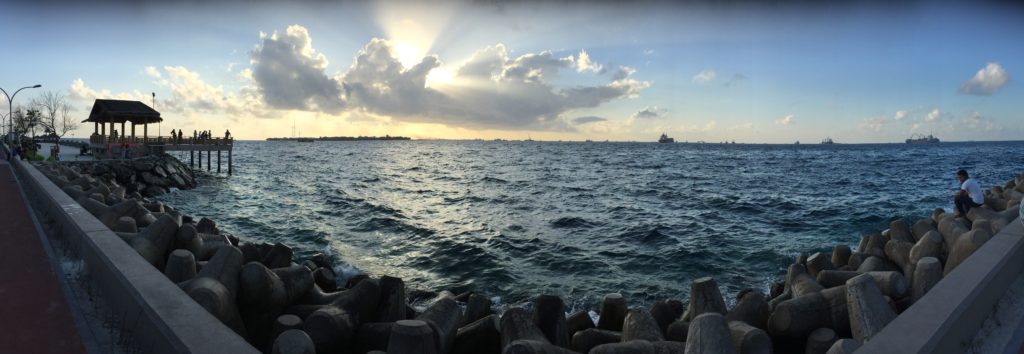 When people ask me to describe Malé, the capital city of the Maldives I say “it is like no other place on earth“. Maldives, in fact, means “the islands of Malé'”. It was the King’s Island, the seat of the Maldivian Royal family from (at least) 1117 until 1968 with a couple of interruptions for republics and regencies.
When people ask me to describe Malé, the capital city of the Maldives I say “it is like no other place on earth“. Maldives, in fact, means “the islands of Malé'”. It was the King’s Island, the seat of the Maldivian Royal family from (at least) 1117 until 1968 with a couple of interruptions for republics and regencies.
The Maldives are made up of 1192 tiny islands with a total land area of 298 sq km sitting in 90,000 square kilometres (35,000 sq mi) of Indian Ocean. Almost 400,000 people live in the country with about one-third (about 130,000) living in the capital Malé.
Sadly, this city is often overlooked by the visitors to the physical paradise that are the fascinating Maldives islands. Indeed, many visitors are quite contemptuous of Malé. Before we sailed out to our resort island, we decided to spend time in this unique capital. Video below shows landing in Malé, the tiny island between the main city and the airport is Funadhoo Island. I just found all of those buildings crammed onto that tiny island so fascinating.
Aesthetics: 79%
There are elements of Male life that are akin to Venice. Combine that with a density that feels like Hong Kong as 133,000 people live in an area of just 5.8 km (2.2 sq mi). Crammed with shops, multi-storey housing, well used open spaces, a power station, 34 mosques, two markets, soccer fields and artificial beaches. The streetscapes can look like somewhere in the Middle East. Overlay that with the beach-side feel of Hawaii. An indescribable mix.
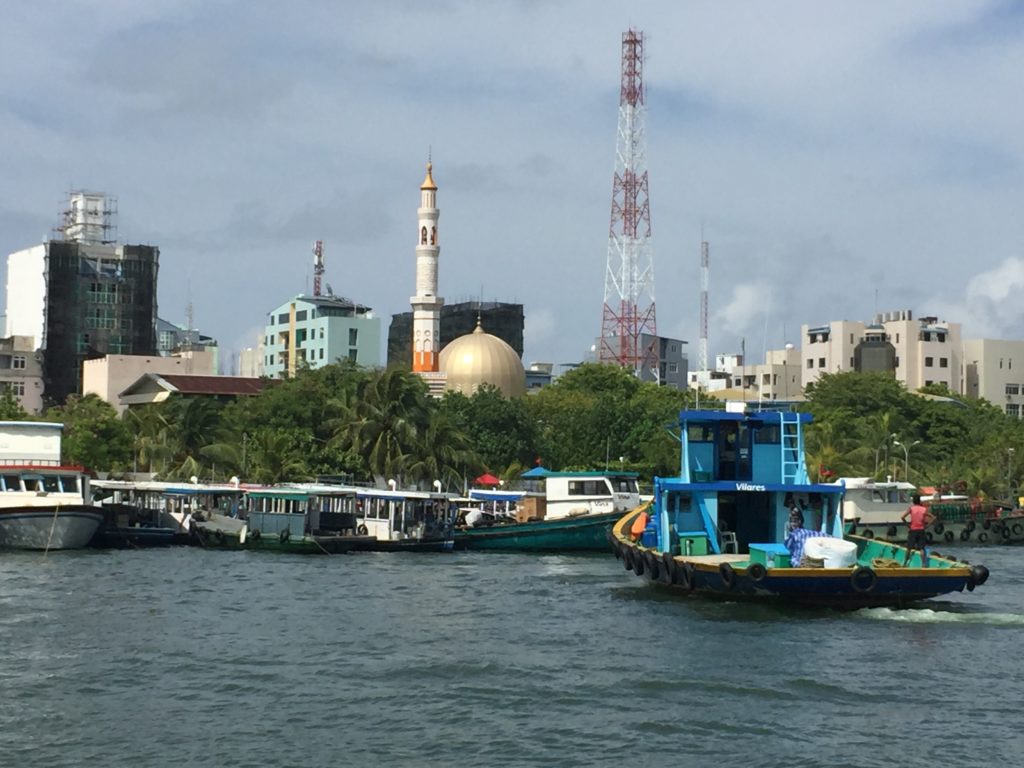
Around Malé itself are other islands:
- Hulhulé (the airport island) which no one lives on. The airport is larger than the capital itself!
- Tiny Funadhoo Island is sandwiched between Hulhulé and Malé
- Next to Hulhulé, is a new artificial island 2 sq km (.75 sq mi) in size known as Hulamamale with a population of 30,000
- Thilafushi an artificial island 7km from Malé which has been created from landfill- relevant because all of Malé’s rubbish comes here

Source: Bluepeace
- the island of Villingili, also known as Vilimalé is just 2km from Malé and a mere 0.2 sq km in size with 10,000 people. Wide, open streets with no cars, lots of trees and two local beaches (no bikinis please) gives a peaceful respite from the main island.
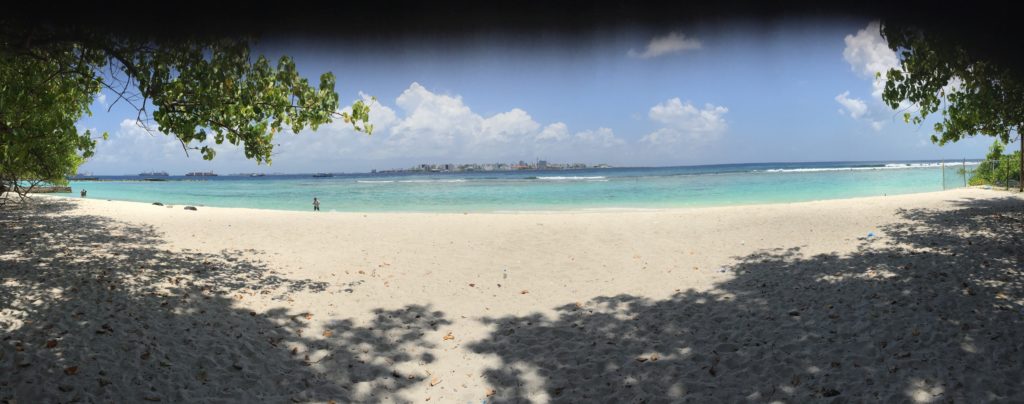
Looking to Malé from Vilimalé
The waters around the islands are beautiful. The view of the sunsets is magnificent. There are some aesthetic issues that are of concern, however:
Electric power is generated in the city by a dirty diesel power plant. We were surprised at how few solar collection systems we saw across the Maldives.
Rubbish disposal is a major issue. We saw little recycling and tourists create vast amounts of rubbish. Thilafushi, it is claimed is growing by one square metre a day from the rubbish being dumped there. It is also the major industrial area of the Maldives with all of the accompanying pollution issues. Bluepeace, the Maldives environmental organisation has described Thilafushi as a “toxic bomb in the ocean“. We saw a lot of rubbish floating in the waters around Malé
Sewage is pumped unprocessed into the sea from six sewer outfalls around Malé’. In 2002, it was believed that “The pollution load from these sewer outfalls probably exceeds the dilution capacity of the receiving waters,”. It is probably worse today. For a country so dependent on its water to generate tourists, this is a major issue.
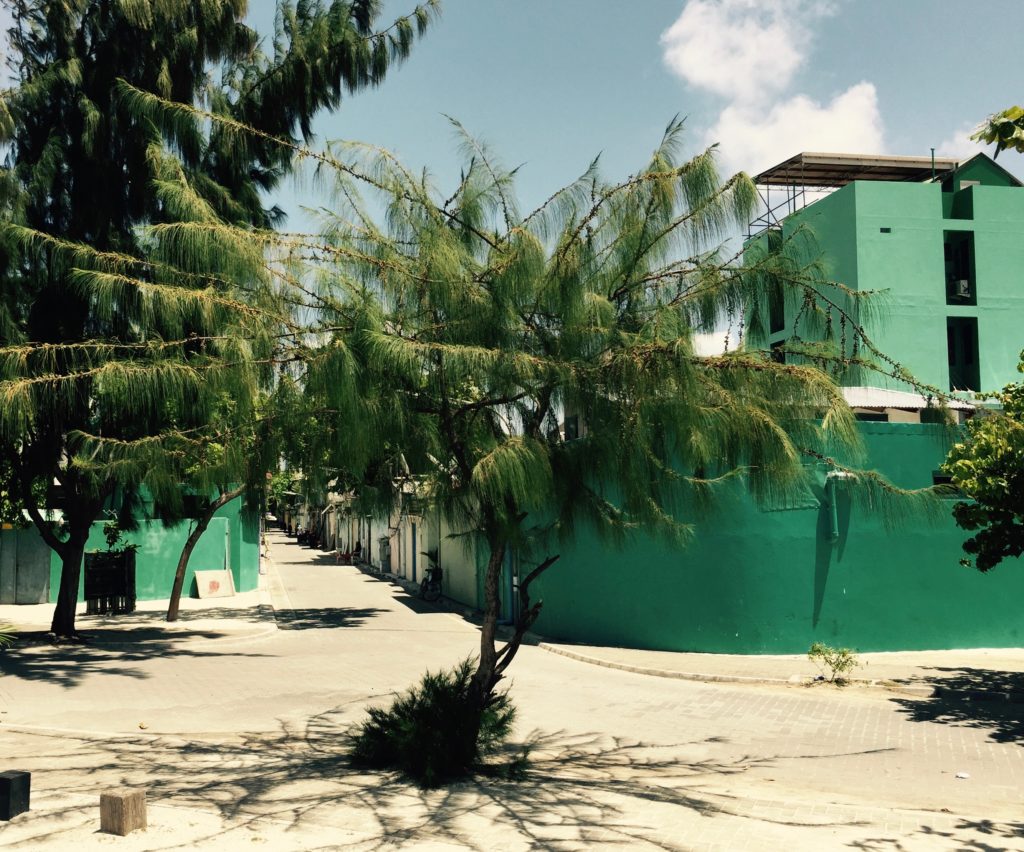
Liveability: 37%
Malé is not a relaxing place. It is a busy, crowded commercial centre. Most Maldivian trade and government business take place on this island. If you have come to relax on the Maldives, do what most foreign visitors do and bypass the city. If you want a peek into a different world, stay for a day or two.
The average temperature is pretty constant all year. March is the hottest month in Maldives with an average temperature of 29°C (84°F) and the “coldest” month is January at 27°C (81°F). February has the longest days with an average of ten daily sunshine hours. The wettest month is September with an average of 243mm of rain.
The best month to swim in the sea is in April when the average sea temperature is 30°C (86°F).
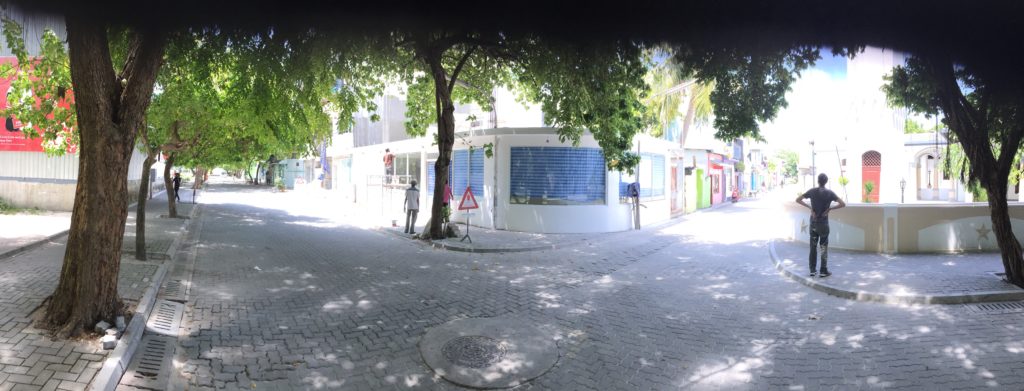
There are few natural resources on the island. Everything is imported (except for fish). Water comes from a desalination plant which pumps the water from deep wells. In 2014, after a fire at the desalination plant, the capital was without water for five days. Residents received bottled and desalinated water provided by neighboring countries. It resulted in shops being attacked by residents.
The Maldivian currency is the Maldivian Rufiyaa and currently sells at 15 mvr to the dollar.
Food is much more expensive than in neighbouring countries like India or Sri Lanka. There is a two-tier system throughout most of the Maldives. Food and other prices in “local” restaurants and venues is much, much cheaper than that in the tourist resorts.
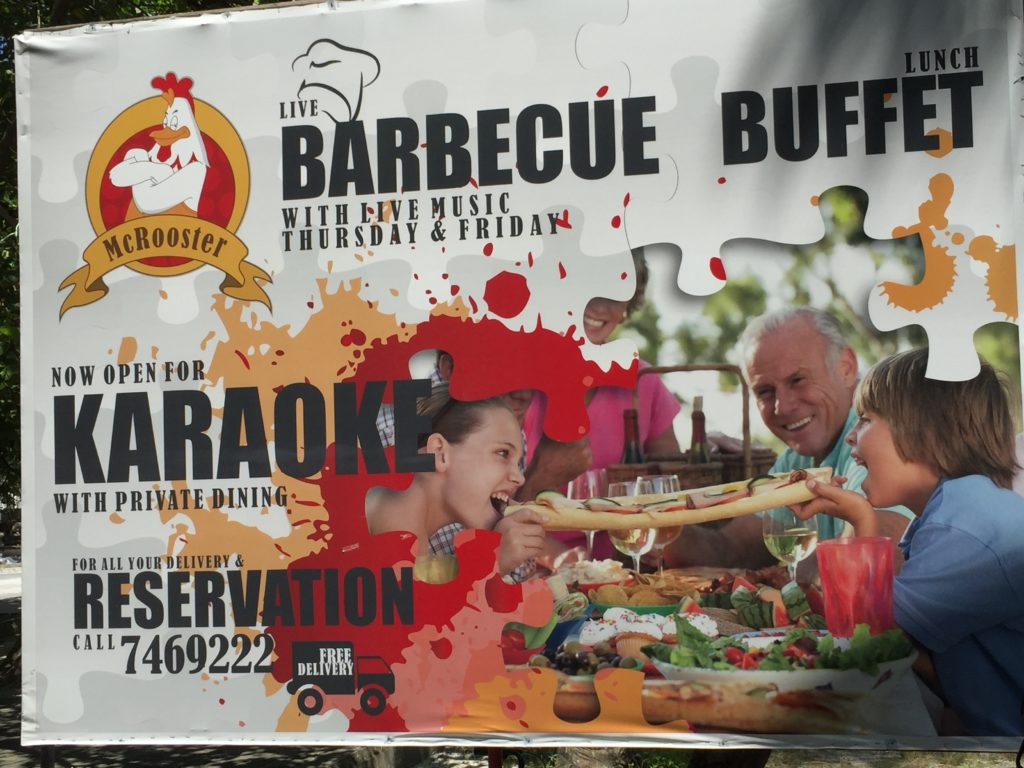
There are significant restrictions on what can be imported into the Maldives. for example, alcohol is prohibited. It can be bought in some restaurants, hotels and resorts but be prepared to pay.
Crime and Safety: 97%
There is a low rate of crime in the Maldives. Overall, it is the ninth safest city I have visited in the world. Mostly petty crime such as opportunistic theft is reported. We also heard many reports of incredible honesty. For example, we heard many times of tourists being chased by locals to return cameras, mobile phones and cash that they may have left somewhere.
Maldivians worry that crime rates while low, are rising. About 0.5% of Maldivians have been associated with illegal drug usage which is seen as a growing issue. There is a drug rehabilitation centre on Vilimale -which few people openly discuss.
One of the biggest issue is the level of intolerance which emerges from time to time. For example, the country’s most prominent independent blogger was stabbed in the street in 2012. The National Museum was attacked with Buddhist and Hindu artifacts destroyed in the same year.
There is gang violence between rival gangs in the capital.
Political corruption is of significant concern. The first democratically elected President in 30 years, climate change activist Mohamed Nasheed was toppled in 2012 after a mutiny by police and troops. He was then arrested and jailed in 2015 for 13 years on corruption charges by his political rivals, a move condemned by the UN. There were riots on the streets with all opposition leaders arrested and put into jail.
On the occasions when there has been political turmoil, foreign visitors have been largely immune from it.
Culture and Food: 41%
In the modernisation program after the deposition of the king in 1968, the Malé Royal Palace (Gan’duvaru) was destroyed along with historic forts and bastions. The site is now a park and the National Museum of the Maldives.
The museum leaves a lot to be desired. If you are looking for a coherent understanding of the history and culture of Maldives, the museum does not give it to you. It is complicated by the vandalism that took pace four years ago when thousand year old, Buddhist artifacts were destroyed for being sources of “idoltry” on the island. The Police Museum inside the main museum was fascinating.
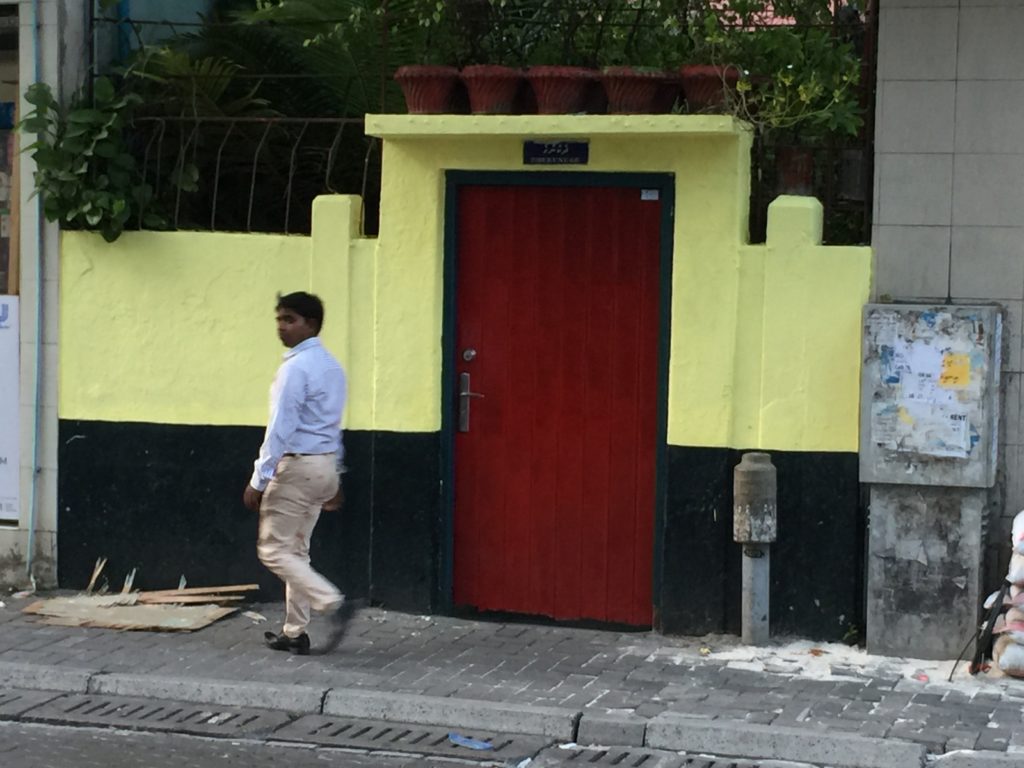 One of the fascinations is wandering around the island, dodging the numerous taxis and soccer on the main shopping street, the minor roads. We never knew where a road might lead. There were some streets that were tree lined with an occasional gem of a relaxed cafe. The streets are very narrow because of the lack of space.
One of the fascinations is wandering around the island, dodging the numerous taxis and soccer on the main shopping street, the minor roads. We never knew where a road might lead. There were some streets that were tree lined with an occasional gem of a relaxed cafe. The streets are very narrow because of the lack of space.
People watching is a must – fisherman doing their work, couriers delivering anything from stacks of eggs to washing machines, women doing the washing, and kids going to school.
There are festivals across the Island. Maldivian idol has heats around the island. There are two film theatres. One showing international films and one showing Maldivian and Indian films
Soccer is huge. We would have loved to have got to a game at one of the two staiums.
One unusual aspect of shopping on Malé , was that all shops of a common type were grouped together. So nearly all the furniture shops were in one section. the same with opticians, hardware stores, shoe stores, toy shops and fruit shops. Every second shop seems to be a Convenience store so you will never go far without finding food or drink.
Restaurants were a bit hit and miss. We didn’t find one that really grabbed us for a special night out.
Malé expects modest dress, no alcohol and no eating or drinking outdoors during Ramadan. It is illegal to bring alcohol or pork into the Maldives.
Because of the scarcity of land, hotels are much more expensive than in comparable places. Rooms are quite small, elevators rare and service hit and miss. Many hotels advertise their rooms on Airbnb. There are also a few genuine Airbnb and couch surfing places in Malé!
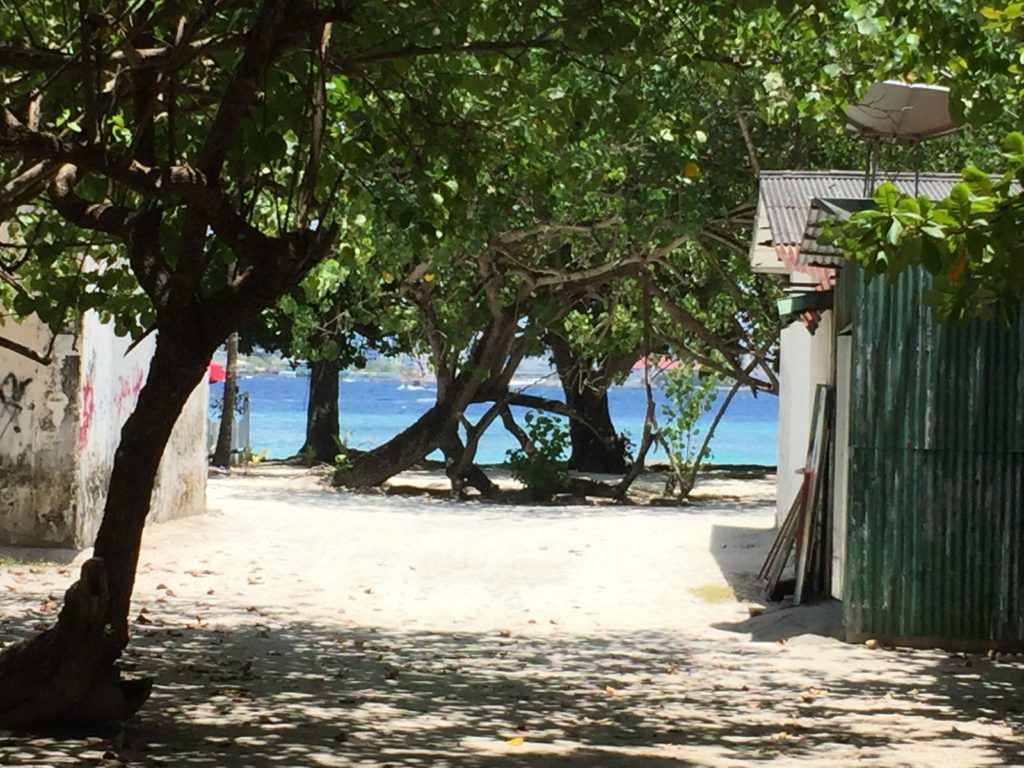
Getting there and around: 60%
Book your flight into the Maldives for during the day. Flying over the turquoise water is astounding. I can only think of a handful of airports in the world where the main transport is a ferry. Perhaps only Toronto City and Venice?
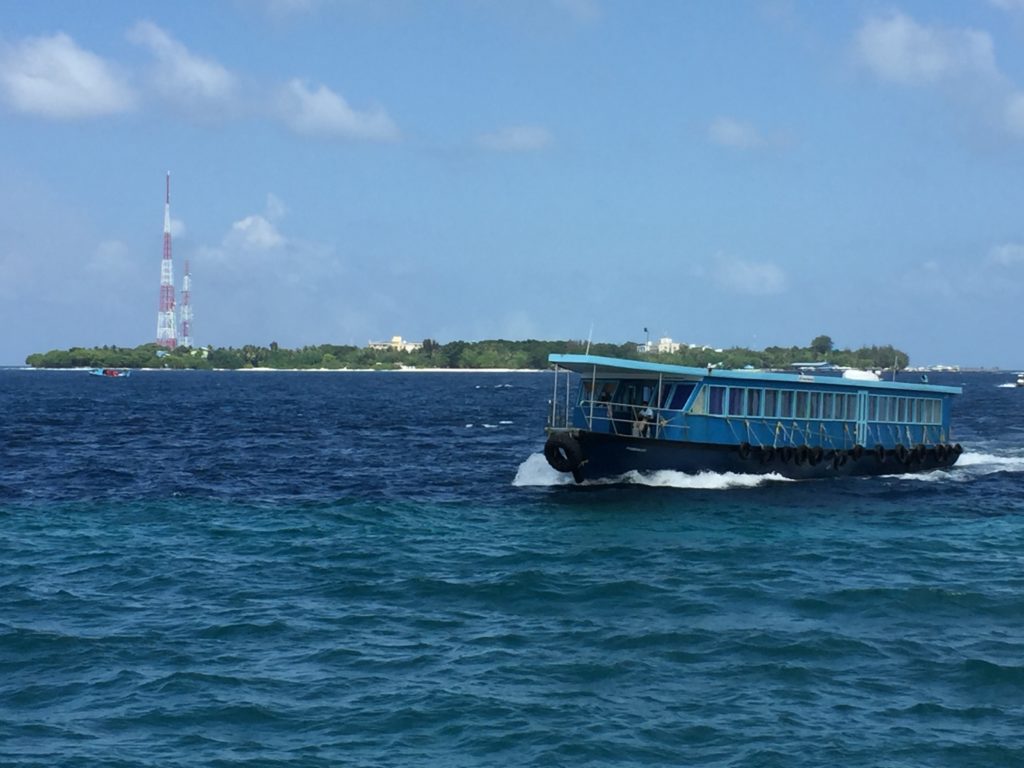
The ferry between Malé Island and the airport operates 24/7. The ferries depart every ten minutes for most of the day. Between 2am and 5am they are less frequent. You can also ride a speedboat for a couple of dollars for the three-minute ride. There are frequent ferries between all of the islands in the capital area run by Maldives Transport and Contracting Company (MTTC). It costs pocket change for most of the services.
We found that taking a taxi on Malé was quite slow with all fo the traffic jams and one-way streets. There are what appeared to be 100s of taxis constantly cruising up and down the main street. Our hotel’s street was so narrow a taxi could not venture up it so we found walking was the way to go.
Vibe: 90.5%
The Verdict: 78%
I rank Malé as 118th out of the 189 cities on the planet I have visited!
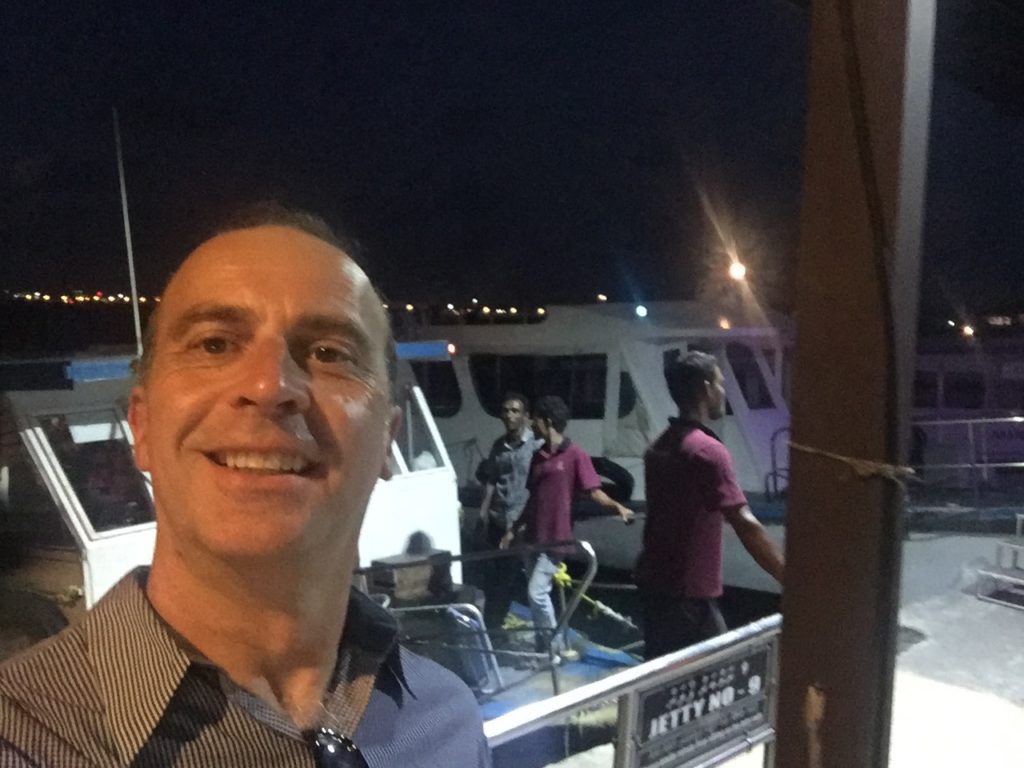
Top Ten
- The Friday Mosque (Hukuru Miskiiy) is one of the few remaining historic buildings on Male dating from 1656. In theory, visitors are supposed to get approval from an official of the Ministry of Islamic Affairs but our guide took us in on the spot
- The Fish and Produce Markets give you a glimpse of “real life” as people haggle over bananas, eggs and still wriggling fish, shrimp and squid.
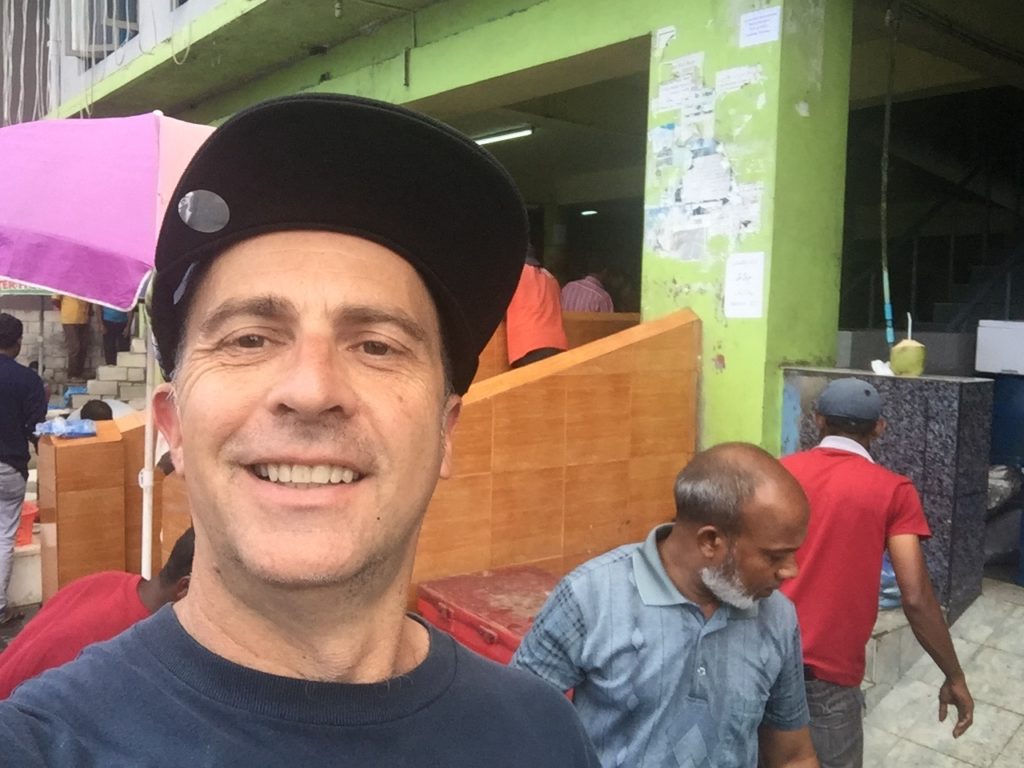
- Islamic Centre (Maldives)– this beautiful and large building (it can fit 5000 people in at one time for prayers) is a landmark. It has nice grounds to relax in. Locals are often found around the centre eating, chatting and relaxing
- Travelling to the neighbouring islands
- City Beach- Surprisingly, Malé does not have a natural beach even though it is an island. This artificial beach is a very clean place to sit and relax or swim in the lagoon (respectful swimming gear please), use the outdoor gym equipment or the running track. There is a cafe, BBQs and often you find a festival with operating here. Its best feature are the stunning sunsets that can be seen from here.
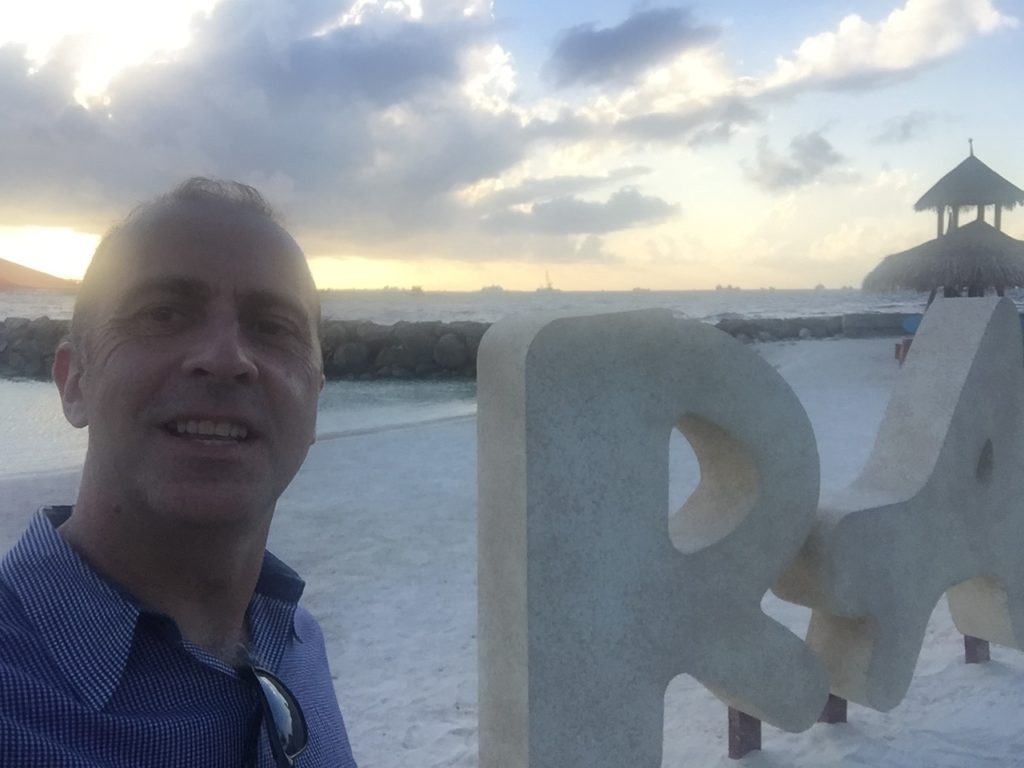
- Tsunami Monument On 26 December 2004, the tsunami struck the Maldives at around 9:30am local time.
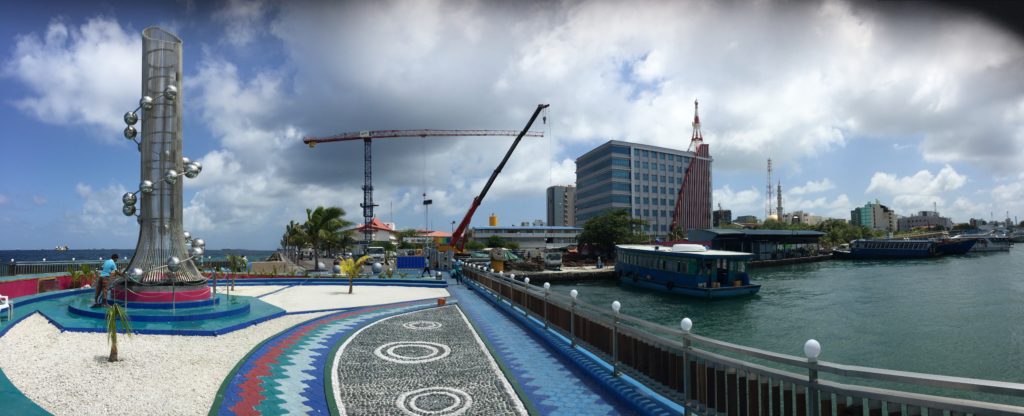 The Maldives is so low that tsunami water swept over nearly every island. The Death toll in the Maldives was 82 and 12,000 people were left homeless. 21 of 87 resorts were closed. Thirteen islands were completely evacuated after the tsunami and 70 others experienced disruptions of water supplies and electricity. The international airport was unusable. Two thirds of Malé was flooded. This video brought home to me how low the island is. This video shows the water splashing over the city’s sea walls on a normal evening on the island
The Maldives is so low that tsunami water swept over nearly every island. The Death toll in the Maldives was 82 and 12,000 people were left homeless. 21 of 87 resorts were closed. Thirteen islands were completely evacuated after the tsunami and 70 others experienced disruptions of water supplies and electricity. The international airport was unusable. Two thirds of Malé was flooded. This video brought home to me how low the island is. This video shows the water splashing over the city’s sea walls on a normal evening on the island - Old Graveyards. there are a number of interesting old grave yards around the city
- Sultan Park- a green oasis which was being dug up and renovated while we were there
- Jumhoorie Maidan ( Republic Square) with the tallest flagpole in Maldives known as Bodu Dhida is a popular gathering spot for local families.
- Muleeaage, the President’s Palace



Maldives is very much associated with the remainder of the world and Velana Global air terminal is the doorway to the green land and blue waters. Jumping around islands should be possible by ships and speed boats. The greater part of its rich retreats and islands can be reached via seaplanes also.
https://maldives-times.com/